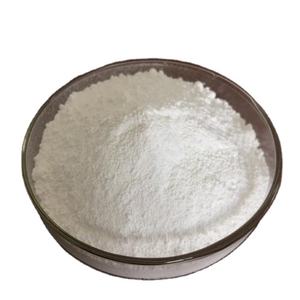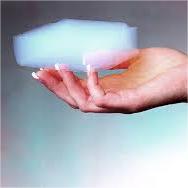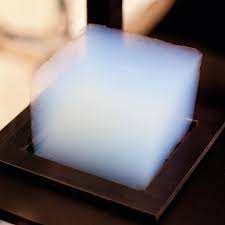Professional industry ceramic supplier, silicon nitride, silicon carbide, aluminum nitride and any other kinds of ceramics.
PRODUCT PARAMETERS
Description
Overview of Heat insulation aerogel blanket
Heat insulation aerogel blanket is a synthetic porous ultralight material derived from a gel, in which the liquid component has been replaced with a gas. The result is a solid with extremely low density and low thermal conductivity, often nicknamed “frozen smoke.” Despite its fragile appearance, it can be engineered to be remarkably strong, holding the title of the world’s best insulating solid material.
Features of Heat insulation aerogel blanket
-
World’s Lowest Thermal Conductivity: Provides unparalleled insulation performance, far superior to traditional materials.
-
Extremely Low Density: One of the lightest solid materials known to man, with a composition of up to 99.8% air.
-
High Surface Area: Possesses an incredibly large internal surface area, making it valuable for filtration and absorption applications.
-
Versatile Composition: Can be made from various materials, including silica, carbon, and metal oxides, each with unique properties.
-
Exceptional Porosity: Its nanoporous structure is responsible for its outstanding insulating capabilities.
Specifications of Heat insulation aerogel blanket
Heat insulation aerogel blanket provides outstanding thermal protection. This material uses silica aerogel particles trapped within a fibrous reinforcement. The result is a very thin, flexible blanket. Its main job is stopping heat flow extremely well.
This blanket boasts an incredibly low thermal conductivity. Its thermal conductivity typically ranges from 0.013 to 0.018 W/(m·K). This number is much lower than traditional insulation materials. Less heat escapes through the blanket. Less heat enters through it. This saves significant energy.
The aerogel blanket handles very high temperatures. It works effectively from cryogenic temperatures up to around 650°C. It resists direct flame. It won’t melt. This makes it safe for demanding industrial settings. It also withstands low temperatures without becoming brittle.
Durability is another key feature. The blanket is hydrophobic. It actively repels water. Moisture does not soak into it. This prevents the insulation value from dropping when wet. The material structure stays stable over time. It resists compression. It maintains its thickness and performance long-term.
Installation is straightforward. The blanket is flexible. It can be easily cut with regular tools. Workers fit it around pipes, ductwork, valves, and complex equipment shapes. Its thin profile saves space compared to bulkier insulation. This is vital in tight areas.
Safety is a major benefit. The aerogel material itself is non-combustible. It doesn’t produce toxic smoke in a fire. This enhances protection for people and property. It meets strict fire safety codes.
Applications are wide-ranging. Industries use it extensively in power generation, oil and gas, refining, and chemical processing. It insulates pipes, boilers, furnaces, tanks, and heat exchangers. Construction uses it for building insulation requiring high performance in limited space.
Applications of Heat insulation aerogel blanket
Heat insulation aerogel blankets offer remarkable thermal protection. These thin, flexible materials are incredibly effective. They work across many demanding situations.
Factories rely on them heavily. Aerogel blankets wrap pipes carrying very hot or very cold fluids. This prevents dangerous heat loss or gain. It keeps processes stable and saves energy. They insulate large storage tanks perfectly. This protects temperature-sensitive liquids inside. Furnaces and boilers benefit too. Adding aerogel reduces surface heat significantly. This improves safety for workers nearby.
Builders use aerogel blankets in walls and roofs. They fit into tight spaces easily. This boosts a building’s insulation without adding bulk. They help keep indoor temperatures comfortable year-round. They also cut heating and cooling costs noticeably. Some special windows incorporate thin aerogel layers. This stops heat escaping through the glass.
The energy sector finds them indispensable. Solar thermal systems use aerogel to trap heat efficiently. This makes solar collectors perform better. LNG facilities need extreme cold protection. Aerogel blankets shield pipes and equipment from frost. They prevent dangerous ice buildup.
Automotive engineers use aerogel blankets under hoods. They shield sensitive electronics from engine heat. They protect vehicle interiors from exhaust system temperatures. This enhances passenger comfort and safety.
Firefighters wear gear insulated with aerogel. It protects them from intense heat during rescue operations. Aerospace uses it for insulating sensitive spacecraft components. It handles the harsh temperatures of space travel.
Company Profile
Tanki New Materials Co.Ltd. focus on the research and development, production and sales of ceramic products, serving the electronics, ceramics, chemical and other industries. Since its establishment in 2015, the company has been committed to providing customers with the best products and services, and has become a leader in the industry through continuous technological innovation and strict quality management.
Our products includes but not limited to Aerogel, Aluminum Nitride, Aluminum Oxide, Boron Carbide, Boron Nitride, Ceramic Crucible, Ceramic Fiber, Quartz Product, Refractory Material, Silicon Carbide, Silicon Nitride, ect. please feel free to contact us.

Payment Methods
T/T, Western Union, Paypal, Credit Card etc.
Shipment Methods
By air, by sea, by express, as customers request.
5 FAQs of Heat insulation aerogel blanket
What is an aerogel insulation blanket?
It’s a thin, flexible blanket. It uses aerogel inside. Aerogel is mostly air trapped in tiny pockets. This structure makes it extremely good at stopping heat transfer. The blanket form makes aerogel easy to handle and install on pipes, ducts, or equipment.
How does it stop heat so well?
Aerogel’s structure is key. It contains over 90% air. This air is locked in nanometer-sized pores. Heat struggles to move through this trapped air. Solid particles in the aerogel also block heat radiation. Together, these effects create a powerful thermal barrier in a very thin layer.
What are the main benefits?
Its biggest advantage is high performance in minimal space. You get excellent insulation without bulky layers. This saves space in tight areas. It also withstands high temperatures, often over 650°C. It’s flexible, durable, and generally resistant to water and fire. It reduces energy costs effectively.
Where is it typically used?
Use it where space is limited or high heat protection is vital. Common places include industrial pipes, valves, boilers, and exhaust systems. It’s popular in oil and gas, power generation, and marine applications. Also use it for insulating building walls or roofs needing thin, high-performance solutions.
Are there any downsides?
The main drawback is cost. Aerogel insulation costs more upfront than traditional materials like fiberglass. Consider the long-term energy savings and space benefits. It can be fragile if crushed or bent sharply during rough handling. Always follow the manufacturer’s installation instructions carefully.
REQUEST A QUOTE
RELATED PRODUCTS

3mm/6mm/10mm Airgel aerogel insulation for building and wall insulation

Nano Silica Aerogel Insulation Aerogel blanked used for building fire protection and insulation

Fireproof nano aerogel silicate insulating blanket low thermal conductivity aerogel felt for Wall Building Insulation

high temperature kiln pipline equipment thermal insulation ceramic fiber paper aerogel base 1260 ceramic fibre paper

Production of Insulating Aerogel Silica-aerogel Pulver Aerogel Te Koop



